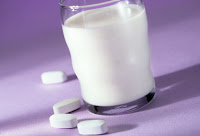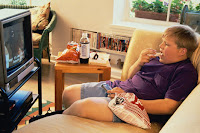![]() |
| Won't take long until China is the world economy #1 and not much longer until they are the fattest economy, as well ;-) |
Let's see which one do I pick? Oh, ok... The
SuppVersity Figure of the Week is 0.19
. This is the correlation coefficient that describes the
statistical relation - which is as every
SuppVersity student knows no evidence of causal relationships (!) - between the
per capita gross domestic product (GDP) and the prevalence of obesity as it was calculated by Mario Siervo and colleagues from the
Newcastle University and the
UCL Institute of Child Health in London as part of their analysis of country-specific prevalence estimates of overweight, obesity and hypertension and their relation to nutrient and food intakes and (and this is new!) the economy (Siervo. 2013).
The scientists used the
WHO Global Infobase database, year- and country-specific Food Balance Sheets (FBS) and information on urbanization rates, per capita GDP and physical inactivity and did so much statistical shenanigan that of all the baseline correlations (incl. milk consumption and egg consumption, as predictors of obesity and high blood pressure) only the already mentioned per capita GPD, as well as physical inactivity (PA) and cereal consumption (CE) remained as highly significant predictors of being overweight (GPD), being obese (PA) and not being obese (CC). Statistical significant, but very low correlations were also observed for obesity and the relative energy intake from sugar (regression coefficient B = 0.03).
Makes me wonder what the addition of the average population-based magnesium intake would have had to contribute to the results... why? Well, the diabesity-protective role of magnesium is the first topic of today's installment of
On Short Notice.
The importance of adequate magnesium intake can hardly be overestimated
The latest issue of the
Journal of Nurtition (US) features yet another article showing how important adequate magnesium intakes are for an optimal glucose metabolism. Since a messed up glucose management it one of the root causes of most of the features of the metabolic syndrome, the results Adela Hruby and a ton of colleagues present in their latest paper are of great importance not just for individual, but also for public health. The latter is particularly true in view of the fact that the researchers who started out with the hypothesis that single nucleotide polymorphisms (SNPs ~= minimal genetic differences between person A and B) would explain / influence the potential differences of the association between magnesium intake and fasting glucose and insulin on an individual level.
![]() |
| It's not going to work for everyone but there is scientific evidence that 500mg/day magnesium can help with headaches (learn more) |
To verify / disprove this hypothesis the researcher analyzed data from fifteen studies from the CHARGE (Cohorts for Heart and Aging Research in Genomic Epidemiology) Consortium . The studies provided data from up to 52,684 participants of European descent without known diabetes. In a fixed-effects meta-analyses, they quantified
- cross-sectional associations of dietary magnesium intake with fasting glucose (mmol/L) and insulin (ln-pmol/L) and
- interactions between magnesium intake and SNPs related to fasting glucose (16 SNPs), insulin (2 SNPs), or magnesium (8 SNPs) on fasting glucose and insulin.
After adjustment for age, sex, energy intake, BMI, and behavioral risk factors, the found that each 50-mg/d increment in magnesium intake was inversely associated with fasting glucose (β = −0.009 mmol/L,
P< 0.0001) and insulin (−0.020 ln-pmol/L,
P< 0.0001). Plus -
and this is the actual news - these improvements (within a "normal" intake of magesium wa below the 2xRDA dose of 720mg) was not generally related to the individual genetic make-up of the
healthy stud participants.
However, rs2274924 in magnesium transporter-encoding TRPM6 showed a nominal association (uncorrected P = 0.03) with glucose, and rs11558471 in SLC30A8 and rs3740393 near CNNM2 showed a nominal interaction (uncorrected, both P = 0.02) with magnesium on glucose.
Now what's interesting, here, is that previous studies investigating the effects of familial
TRPM6 polymorphisms showed that a mutation / loss of the former SNP, i.e.
TRPM6, will disrupt the regular magnesium flux in the kidney and epithelial tissue an is accompanied by hypo- (=low) not hyper-(=high) glycemia (Schlingmann. 2003; Chubanov. 2005).
![]() |
| Are there other reasons you may be set to be obese (learn more)? |
These observations, as well as results from a case-controlled study by Romero et al. who did not find gene variations in
TRPM6 and its cousin TRPM7 to "be useful predictors for T2DM risk assessment" (Romero. 2010). Clearly point towards the negligent effects genes have on the magnesium <> diabetes connection. In other words: Keeping an adequate magnesium intake is one of the easiest ways to reduce your risk of developing type II diabetes regardless of your genetic make-up.
What's the best magnesium supp? Cap, tablet or powder? Oxide, citrate, lactate, ...?
![]() |
| Speaking of solutions, magnesium and glucose management - Did you know that no-calorie sweeteners disrupt early response to glucose ingestion, reduce GLP-1 expression and could thus promote overeating (learn more) |
Although the urinary excretion of magnesium after the ingestion of equal amounts of magnesium oxide in the form of everescent tablets vs. regular powder-filled caps is not a direct quantitative indicator of tissue accumulation (t's still better than the serum mg / creatinine ratio; cf. Bøhmer. 1990), the +100% increase in this parameter Siener et al observed in 2011 with the former preparation is still good evidence for the superiority of the highly soluble tablet preparation (Siener. 2011).
In a similar study, Marcelín-Jiméne et al. found that the pharmacokinetics of a single 500mg oral dose of Mg-valproate 500-mg ingested eiher as a solution, suspension, or in form of enteric-coated tablets were identical (Marcelín-Jiméne. 2009). So, if we discard the initial surge in magnesium with the solution an suspension that was absent with the enteric-coated tabs (they took ~2.5h to fully kick in) it is probably not necessary that you crush your tabs to make a "crushed tab magnesium suspension" out of them ;-)
I do yet suspect that you will probably be more interested in the results of one one of the most comprehensive evaluations of the consequences of chronic supplementation with different types of magnesium supplements, namely the inorganic magnesium salts MgCl2, MgSO4, MgCO3 and magnesium-acetate and their organic cousins in which the magnesium is bound to pidolate, citrate, gluconate, lactate or aspartate from a 2005 rodent study by Coudray et al.:
![]() |
| Figure 1: Plasma an bone (primary axis) as well as red blood cell (RBC; 2ndary axis(!)) content after 14 days of supplementation with identical amounts of magnesium in different organic and inorganic forms (Coudray. 2005) |
Now regardless of which of these magnesium supplements you pick, one thing probably holds for all of them, if your levels are already saturated you will only increase the workload on your kidneys (Altura. 1994). Or put simply, if you pick one of the expensive versions such as mg-lactate the result is expensive urine (matches well with the tons of B-vitamins you hopefully peeing out and not retaining from your 12x overdosed "high potency B-supplement") - So, if you eat tons of magnesium rich foods already, save the money for more of those goods foods.
Review underlines the importance of adequate energy intake in reproductive function
![]() |
| Figure 1: Reproductive hormone changes in exercising cynomolgus monkeys undergoing energy restriction (Williams. 2001) |
Everyone who has read all parts ot the
SuppVersity Athlete's Triad Series has hopefully absorbed the message that "under-eating" is the main reason for the endocrine disturbances in both men and women. The latter and the non-significance of cortisol outside of its function as a glucocorticoid (=hormone that does everything to keep your blood glucose from dropping) is also what Fuqua and Rogol emphasize in their latest review of the literature (Fuqua. 2013):
The data in figure 1, which shows parameters of the endocrine . function of female monkeys who were placed on a fixed caloric intake and then trained to run on a treadmill for increasing lengths of time, shows that after only 2 blocks, the reproductive function was totally lost (again, usually male mammals remain fertile, but often loss of libido, sexual dysfunction, as well as depression and the obvious weight loss and exercise performance plateaus are non-sex-specific).
As Fuqua et al. point out, the onset of amenorrhea was accompanied by decreases in gonadotropins, estradiol, and progesterone. In that, the endocrine hormones are yet nothing but "slaves" to the changes in ghrelin, leptin and PYY, of which particularly the former, i.e. ghrelin suppress
es pulsatile LH secretion in adult men and women. If you are interested in learning more, check out the
Athlete's Triad Series, if you haven't done that already.
Glutamine & maltodextrin keep anaerobic power up to the last sprint
![]() |
| It wasn't part of the post of PWO glucose repletion, but theoretically glutamine could help here as well. |
In an article that was published ahead of the next print issue of the
Asian Journal of Sports Medicine Roohi and Khorshidi, two researchers from the
Tehran University of Medical Sciences report that the ingestion of both 50 mg of maltodextrin and/ or 0.25g/kg body weight glutamine has significant ergogenic effects on repeated sprint performance.
What's interesting about this study is that the participants were all "well-trained physical education students who were participating in a training regimen (three or more days a week for at least an hour)" and not the next best sedentary volunteers the scientists were able to find (most importantly, they were not smoking water pipe - you got to love those cultural differences ;-)
As you can see in
figure 2 the provision of the supplements two hours before the first of three RAST test, which consisted of 6x35m discontinuous
all-out sprints, with 10 seconds rest between the individuals sprints (all six sprints are one bout), did yield ergogenic effects from the very first exercise bout on.
![]() |
| Figure 2: Minimal and maximal power on subsequent 6x35min sprints (1h in between bouts) with or without matlodextrin and/or glutamine supplementation 2h before the workout (Raahdi. 2013) |
Statistical significant were yet only the difference between the placebo supplement (water) and the combined treatment during the third of the RAST tests. What's particularly interesting is the additive nature of the effects about which the Iranian researchers speculate that it could be "due to greater storage of carbohydrate in sites other than skeletal muscle, the most likely candidate being the liver" (Roohi. 2013), as well as glutamine's own role as a substrate for gluconeogenesis in the liver.
"Real world" evidence: Early exposure to mercury precipitates diabetes in man
From rodent studies, we already know that early mercury exposure increases the susceptibility to develop diabetes later in life. With the soon-to-be-published results from a prospective cohort of 3,875 American young adults who were 20-32 years old and free of diabetes in 1987, when the first data-set was acquired, the number of subjects who had abnormally high toenail mercury levels was extraordinarily high in the 288 incident cases of diabetes that occurred in the years up to the 18 years of follow-up.
Did you know that there is no correlation between amalgam fillings and Hg levels in the toe nails? At least according to a 2007 study by Björkman et al. who analyzed brain, blood, muscle and toenails of 30 deceased individuals the statistically non-significant correlation between the surface area of amalgam fillings and toenail mercury is even negative (meaning more fillings = lower Hg levels in the nails; Björkman. 2007). This is yet no reason to be relieved. In fact, it's rather the exact opposite: While the Hg levels in the toenails may have been low, the levels of the hardly less toxic inorganic mercury in the brain, as well as the total mercury concentrations in the pituitary and thyroid were significantly correlated with the surface area of amalgam fillings.
After adjustment for age, sex, ethnicity, study center, education, smoking status, alcohol consumption, physical activity, family history of diabetes, intakes of long-chain n-3 fatty acids, as well as serum magnesium, and toenail
selenium levels the toenail mercury levels were still positively associated with the incidence of diabetes. With a probability of only 2% that we are dealing with a statistical outlier and an increased diabetes risk of 65% this provides another reason to give all mercury containing stuff an extra wide berth (He. 2013).
Against that background it appears to be all the more important to keep an adequate dietary intake of nutrients such as selenium and zinc, which have only recently been shown to useful
adjuvants to a standard treatment of thiol chelator (DTT) regimen in a rodent model of acute mercury exposure (Deepmala. 2013) . The latter is obviously the extreme version of the slow, but constant onslaught of mercury most of us are exposed to, but our bodies' very own detoxification mechanism rely on the presence of adequate amounts of zinc (for the necessary metallothioneins; cf. Durnam. 1997) and selenium (for glutathion repletion;
read more about selenium).
Since these "
Short News" got a little longish, I have just updated the facebook news with a couple of shorter items, influcing among others...
![]() |
| Man or woman, trying to build muscle or get ripped, always prefer whole proteins (and whole foods in general) over isolated nutrients. That this is particularly true for amino acids has been addressed in way more than the two most recent posts on the repartitioning effects of isoleucine and respective peptides in whey (learn more) and the related post "Don't Judge a Protein By Its Amino Acids" (read it) here at the SuppVersity |
EAA induced protein synthesis - Additional energy from carbohydrates or alanine does not increase protein synthesis beyond what 10g of essential amino acids alone will do (read more)- Human data on ergogenic effects of fish oil "inconclusive" - Scientists also point towards problems with increased immunosuppression and prolonged bleeding times (read more)
- Probiotics for bone health -An exclusively male thing? At least in rodents their beneficial effect on bone density appears to be sex-specific (read more)
- Alternate day fasting and exercise make a perfect match - 2x higher weight loss exclusively from body fat and greater improvements in cholesterol particle distribution in the combination group (read more)
There are as usual more sort news for you to spend the hours to whatever you have planned for Saturday night, so I suggest you briefly surf over to
www.facebook.com/SuppVersity check out the rest and comment and discuss the latest news.
References:- Altura BT, Wilimzig C, Trnovec T, Nyulassy S, Altura BM. Comparative effects of a Mg-enriched diet and different orally administered magnesium oxide preparations on ionized Mg, Mg metabolism and electrolytes in serum of human volunteers. J Am Coll Nutr. 1994 Oct;13(5):447-54.
- Björkman L, Lundekvam BF, Laegreid T, Bertelsen BI, Morild I, Lilleng P, Lind B, Palm B, Vahter M. Mercury in human brain, blood, muscle and toenails in relation to exposure: an autopsy study. Environ Health. 2007 Oct 11;6:30.
- Bøhmer T, Røseth A, Holm H, Weberg-Teigen S, Wahl L. Bioavailability of oral magnesium supplementation in female students evaluated from elimination of magnesium in 24-hour urine. Magnes Trace Elem. 1990;9(5):272-8.
- Coudray C, Rambeau M, Feillet-Coudray C, Gueux E, Tressol JC, Mazur A, Rayssiguier Y. Study of magnesium bioavailability from ten organic and inorganic Mg salts in Mg-depleted rats using a stable isotope approach. Magnes Res. 2005 Dec;18(4):215-23.
- Chubanov V, Gudermann T, Schlingmann KP. Essential role for TRPM6 in epithelial magnesium transport and body magnesium homeostasis. Pflugers Arch. 2005 Oct;451(1):228-34.
- Deepmala J, Deepak M, Srivastav S, Sangeeta S, Kumar SA, Kumar SS. Protective effect of combined therapy with dithiothreitol, zinc and selenium protects acute mercury induced oxidative injury in rats. J Trace Elem Med Biol. 2013 Feb 18.
- Durnam DM, Palmiter RD. Analysis of the detoxification of heavy metal ions by mouse metallothionein. Experientia Suppl. 1987;52:457-63.
- Fuqua JS, Rogol AD. Neuroendocrine alterations in the exercising human: Implications for energy homeostasis. Metabolism. 2013 Feb 14.
- He K, Xun P, Liu K, Morris S, Reis J, Guallar E. Mercury Exposure in Young Adulthood and Incidence of Diabetes Later in Life: The CARDIA trace element study. Diabetes Care. 2013 Feb 19.
- Marcelín-Jiménez G, Angeles-Moreno AP, Contreras-Zavala L, Morales-Martínez M, Rivera-Espinosa L. A single-dose, three-period, six-sequence crossover study comparing the bioavailability of solution, suspension, and enteric-coated tablets of magnesium valproate in healthy Mexican volunteers under fasting conditions. Clin Ther. 2009 Sep;31(9):2002-11.
- Romero JR, Castonguay AJ, Barton NS, Germer S, Martin M, Zee RY. Gene variation of the transient receptor potential cation channel, subfamily M, members 6 (TRPM6) and 7 (TRPM7), and type 2 diabetes mellitus: a case-control study. Transl Res. 2010 Oct;156(4):235-41.
- Schlingmann KP, Waldegger S, Konrad M, Chubanov V, Gudermann T. TRPM6 and TRPM7--Gatekeepers of human magnesium metabolism. Biochim Biophys Acta. 2007 Aug;1772(8):813-21. Epub 2007 Apr 3. Review.
- Siener R, Jahnen A, Hesse A. Bioavailability of magnesium from different pharmaceutical formulations. Urol Res. 2011 Apr;39(2):123-7.
- Siervo M, Montagnese C, Mathers JC, Soroka KR, Stephan BC, Wells JC. Sugar consumption and global prevalence of obesity and hypertension: an ecological analysis. Public Health Nutr. 2013 Feb 18:1-10.
- Williams NI, Caston-Balderrama AL, Helmreich DL, et al.Longitudinal changes in reproductive hormones and men-strual cyclicity in cynomolgus monkeys during strenuous exercise training: abrupt transition to exercise-induced amenorrhea. Endocrinology 2001; 142(6):2381–9

















































